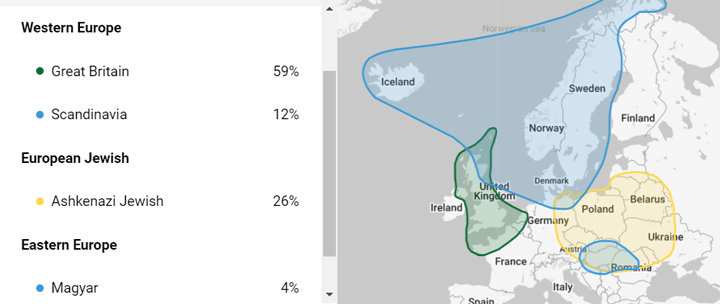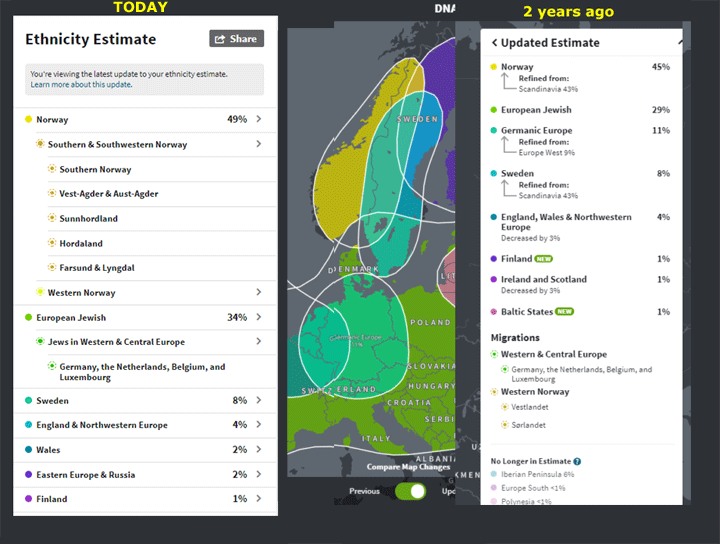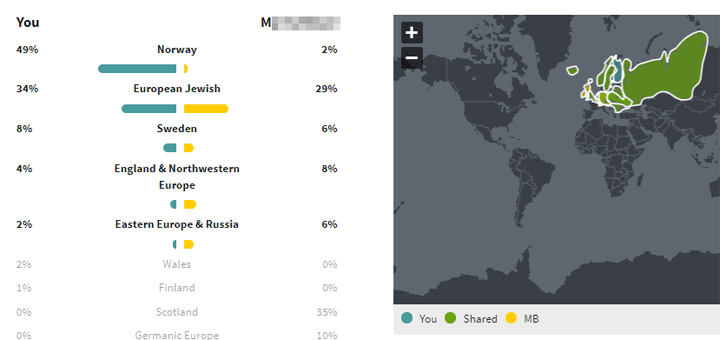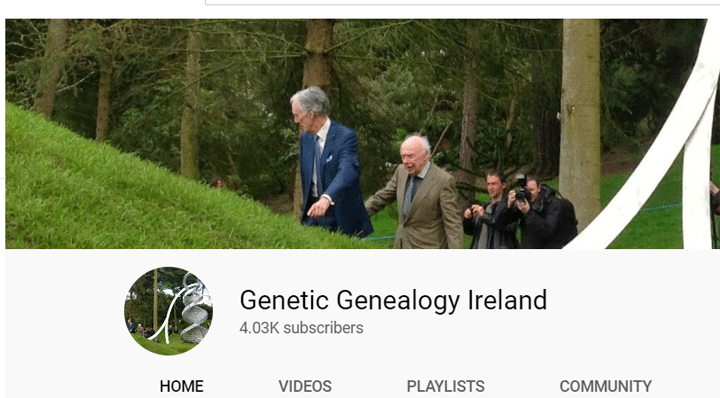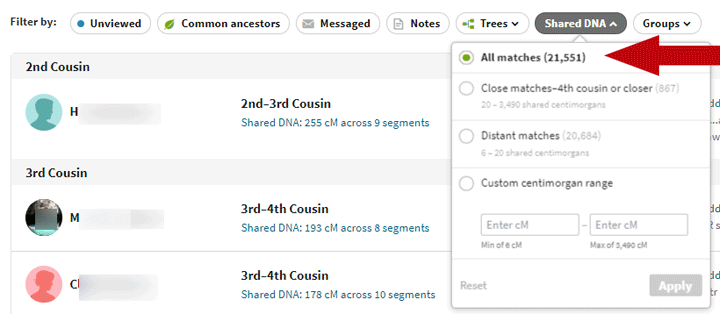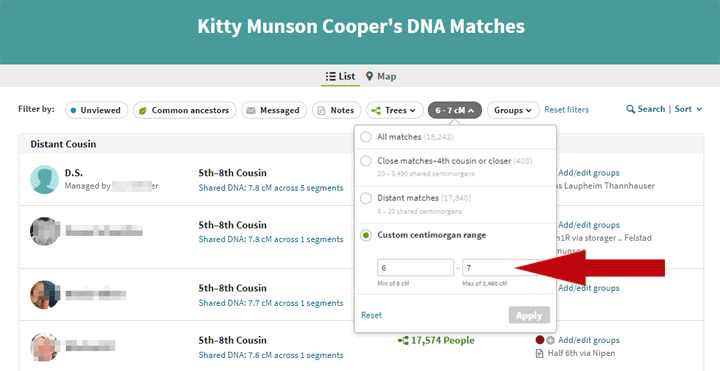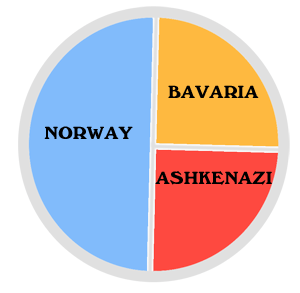 Both Ancestry and FamilyTreeDNA have recently updated their ethnicity results. As much fun as it is to look at your ancestry composition, those estimates do not really reflect the populations of today’s countries, but rather human migrations hundreds of years in the past. Therefore the big picture is more accurate than the smaller areas. Examples that I have found to be realistic are North versus South Europe or East versus West versus South Asia.
Both Ancestry and FamilyTreeDNA have recently updated their ethnicity results. As much fun as it is to look at your ancestry composition, those estimates do not really reflect the populations of today’s countries, but rather human migrations hundreds of years in the past. Therefore the big picture is more accurate than the smaller areas. Examples that I have found to be realistic are North versus South Europe or East versus West versus South Asia.
To the left is a simple pie chart showing the known ancestry for my brother and myself for the last 300 years or so. Our father was Norwegian American, documented back to the 1600s, and our mother was born in Munich to a Jewish father and German (Bavarian) mother. In 2016 I wrote a blog post showing how my brother’s ethnicity appeared at a number of DNA companies and third party sites (click here for that post). This post will look again at the ethnicity predictions for each of us from the main testing companies.
One thing I always find interesting is that they all show my brother Shipley with less DNA from our Jewish grandfather than I have. The variations between full siblings can be quite large.
Let’s look at the new Family Tree DNA results first:
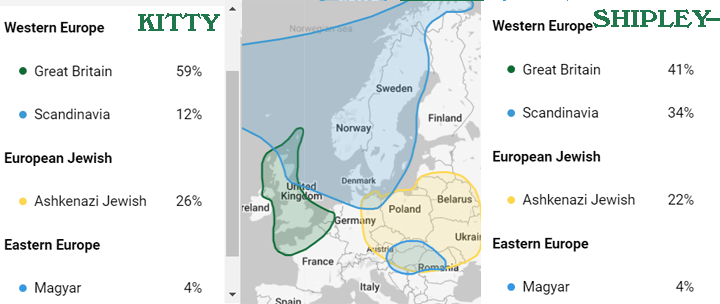
My Origins at Family Tree DNA for my brother and myself
Nice and simple but not very accurate. We have no British ancestors in the last 500 years that we know of. However there is no such thing as German DNA because that area was a crossroads. It usually shows up as French, Scandinavian, British, or even Eastern European. Jewish DNA is quite distinct due to centuries of endogamy. Interestingly, our Jewish never comes out at the expected 25%. All the companies show me with more than that and my brother with less. Although you inherit half of your DNA from each parent, they do not have to pass you an equal amount from each of their parents.
Here are our results at MyHeritage:

Our ethnicity predictions at MyHeritage
MyHeritage is an excellent site for working with your DNA since it includes a chromosome browser that shows triangulations and it also looks through user trees to try and figure out your relationships to your DNA cousins. However, although their ethnicity estimates have improved over time, like Family Tree DNA, they incorrecty find lots of British Isles DNA for us. They call it Irish, Scottish, and Welsh. The Jewish component is only few percentage points different from Family Tree DNA.
Frankly I find the estimates at 23andme and Ancestry more accurate.
